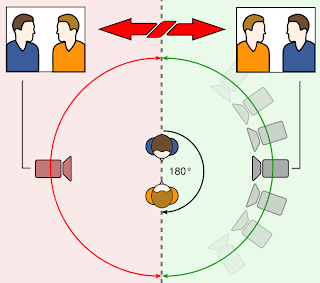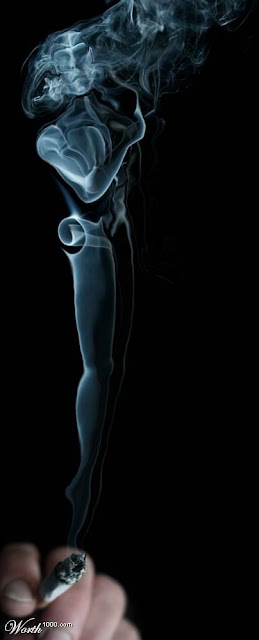Wednesday 13 October 2010
Tuesday 12 October 2010
Prelimanary Task Shoot in October - EVALUATION
1. Filming
Filming... did we:

We finally started to get a little bit creative and apply the theoretical stuff we learned about camera operating...
We were given the storyboards for the short scene we were supposed to shoot in our group of 5 people.
We casted two guys who we found in the Private Studies room and changed the story slightly, adding a mobile phone to it. Our location was the hurtwood film studio where we had a small white corner with two chair, a lamp and a cupboard as props and a door which we implied in the beginning and end of our scene, seeing Character A entering and leaving. This location worked quite well for our scene because it provides a very quiet atymosphere so the tense content of the scene is likely to be emphasized.
We kind of divided the responsibility during filming, so everyone had his own task or job to care about, although everybody was aware of everything that happened. I directed. -ish. This is what I'm most interested in as well. So I rather focused on what actually happened infront of the camera and on the screen than how the scene is framed and camera operations.
The lighting was a little difficult in the beginning because we had such a bright white room the actors looked a little too dark. But we sorted it out with white-balancing. Because it's just a preliminary task shoot and we only had an hour time to shoot, we didn't care more about creating a nicer looking lighting, otherwise we would have wanted a more moody light that matches the actual mysterious diegesis.
- set up camera correctly? Yes, without many problems.
- check the tripod was level (bubbling)? Yes.
- framed shot correctly each time? Well, we tried, but in sometimes we didn't pay enough attention on it which we regretted because in one shot we accidently cut off a small part of the actors top head but left space at the bottom of frame. That doesn't look good.
- made sure that lighting equipment and objects that not belong to the scene are not in the shot! YES
- chosing shots and angles: First we shot the wide and two shots, then the over the shoulder and close-ups. In the end we we filmed character A's entrance and leaving, establishing the closing door.
- 180-degree-rule: due to the wall infront of which we situated the two actors on the chairs prevented us from making the 180-degree-rule mistake (without actually knowing...).
- use of appropriate language and terminology: We did make use of this and since I was pretty much the director I shouted out: Stand-by! ... Action! ... Cut!
What I learned from this experience is more the technical aspects as setting up tripods and operating camera with everything that related to it. How approaching to film a scene (starting with what shot, terminology etc.) was quite familiar to me already.
It was fun though and I hope this is what the media course will exists of a bit more in proximate future.
2. Editing
We're now infront of the computer again. We upload our footage onto Final Cut. At first, the best shots are sorted out in a Log Bin we created in the programme. The Log Bin provides an organised overview and makes access to the best clips easier; it's located in the Browser which is to be seen in this Final Cut screenshot:

The best fitting clips for our scene were quite easy to find. We often only had two takes of one shot and then we chose the one where the camera operation was used more efficient or where the 'actors' did a better job. Sometimes a mistake in terms of wrong lines etc. happened, which was for us of course a reason to use the other take.
In one shot we liked and wanted to take was background noise, so we turned the volume of that down.
For the order of our shots, we used establishing and wide shots first, then showing the reaction and therefore facial expressions with Close-Ups. As soon Character A sits down on his chair we show the two together in a two shot.
I remember the difficulty was to create smooth transitions between cuts. I learned that I have to cut while an object\person moves to prevent weird jump cuts. It's also important to keep an eye on lighting and colors in the image because differences will disrupt the transition's smoothness.
Monday 11 October 2010
Camera Operating
1. Camera operation and functions
First thing to do is setting up the tripod and adjust the bubbling to make the camera steady.
-> The tripod enables the camera (wo)man to do smooth camera shots and movements, such as panning, tracking, tilting and zooming evenly. This is different to handheld camera shots where the shots are shaky and likely to jump. The decision to whether use handehld or steady camera depends on what a scene should communicate, also according to the genre of a movie. Handheld camera shots are often used for Horror or tricky situations in Thriller.
Before starting to record the following has to be settled:
- Timecode - it's found in the right hand corner of the LCD. It's read from the left, showing hours, minutes, seconds and frames recorded. Every second there are 25 frames, it's the amount of pictures taken per second. This creates the illusion of motion.
- white-balancing - The camera needs to know what is "white" to ensure that colors are reproduced accurately. Otherwise, your camera thinks white is what it saw under florescent lights when you are shooting in warm sunny summer sunlight and causes light changes every shot. How to do? Show the camera something white e.g. a wall under the light you'll shoot in. It's possible to white balance manually or with an automatically white-balance setting that most of the new cameras have.
- focussing - the adjustment of the lens so that the image you are video taping is sharp and clear in your view finder or on your monitor. It's important to zoom in on to one spot and focus so it's sharp and then zoom, this enables me to zoom in and out as much as I'd like with a constantly sharp picture.
Aperture setting\recording speed - We can choose between Standard, Extended and Super Long Play. But we shall only record a video tape with Standard Play! Otherwise there'll be overlapping and the result is a smeared and streaked video that possibly can't be read on a VCR.
The Shutter Speed allows us to speed up or slow down the camera movement.
2. Using the camera
Camera shots are chosen related to how a character or object is framed and represented on screen. Directors use different shots to add atmosphere and create a specific mood in a scene.
- Extreme Long Shot/Establishing Shot - usually exteriour shot, establishes time and location, important! Often used at start of a production to provide the audience with information regarding the setting of a storyline. Often followed by...
- Long Shot - character is in frame from head to toe, allows viewer to understand relationship between characters and their environment.
- Mid shot - Character is framed from waist up. Viewer can become more familiar with character because body language and facial expressions are shown in more detail.
- Two shot - two characters in frame, often used in TV Chat shows
- Close Up - character's shoulders and head with a little background is in the frame. Enables to focus on character's emotions, can provide significance to the narrative!
- Point-of-view shot - Is a reference to Close Up. The object or person that is shown is of significance to the charcter we've seen before in the Close-Up shot and he's looking at it at that moment. Used to engange audience with character's motif.
- Extreme Close Up - draws attention even more on emotions of character. No other action taking place around the shot is seen.
The rule of thirds: The rule states that an image should be imagined as divided into nine equal parts by two equally-spaced horizontal lines and two equally-spaced vertical lines, and that important compositional elements should be placed along these lines or their intersections. Proponents of the technique claim that aligning a subject with these points creates more tension, energy and interest in the composition than simply centering the subject would.
When filming people (or photographing), it is common to line the body up with a vertical line, and having the person's eyes in line with a horizontal one.
Continuity editing
This is the predominant style of editing in narrative cinema and television. The purpose of continuity editing is to smooth over the inherent discontinuity of the editing process and to establish a logical coherence between shots. Basically, to ensure that the selected shots are put together in an order that makes sense to the audience – so that they can follow the story as clearly as possible.
In order to do so, the 180 degree rule plays a crucial part to let as scene look conitnious. The rule prevents the camera from crossing the imaginary line connecting the subjects of the shot, so the characters don't jump away from their positions all of a sudden.
Wednesday 6 October 2010
Subscribe to:
Posts (Atom)








